Published
on 11
Oct 2022
|
All rights reserved.
|
|
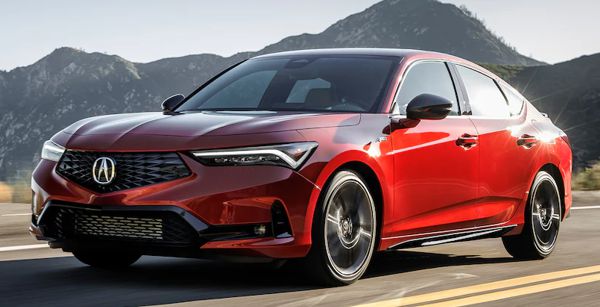
|
|
An
Integra by name, Civic by nature.
|
|
When Honda announced the
return of Integra last year and posted a picture showing its tail, many
fans of the Integra were thrilled. An Integra! Who don’t love it? Fond
memories return: the sportscar shape, crazy noise of an 8000-rpm motor,
magic gearchange and sharp handling. Few driver’s cars at workman’s
budget could attain such a strong reputation.
Somehow, the official launch was anticlimax. It turns out to be just a
Honda Civic Si in different clothes. Perhaps a bit more
premium-feeling, but no more powerful and no more exciting in the way
it looks or drives. In fact, this car should have been called Acura ILX
Mk2 if not the marketing people thought of the naming tricks.
Although the “Integra” is built in the USA and sold exclusively in
North America, it was designed and engineered back in Japan based on
the underpinning of Civic Mk11. All sheet metal is said to be new,
though I suspect the windscreen and front windows from straight from
its donor car. Its shape is more organic than the Civic, with plenty of
crease lines on its bonnet and sides, a fastback tailgate and
teardrop-style tail. A diamond shape fascia and shapely head and
tail-lights give it more character. It looks like a beauty beside the
Civic, but that is more to say about how dull the latter looks. Park
beside a Mercedes CLA and it becomes clear who really knows about
styling.
Development budget must be tight, otherwise Honda would not have reused
everything underneath the skin from the Civic, or more specifically,
the Civic Si. Different sheet metal might stretch its overall length
and width a little, but the most important measurement of wheelbase
remains intact. There is talk about higher chassis rigidity, but only 2
percent on Civic sedan or 5 percent on Civic hatchback. Normal car
makers don’t bother to mention that on press release. Needless to say,
the suspension, steering and brakes are carried over from the Honda as
well. It does get optional adaptive dampers that the Civic Si doesn’t,
reminding us why the Civic Si suddenly deleted that option in its major
makeover last year. On the downside, the Integra ditches the Civic’s
summer tires for less grippy all-season tires, a decision that is not
only strange but also a fatal one, as we will see.
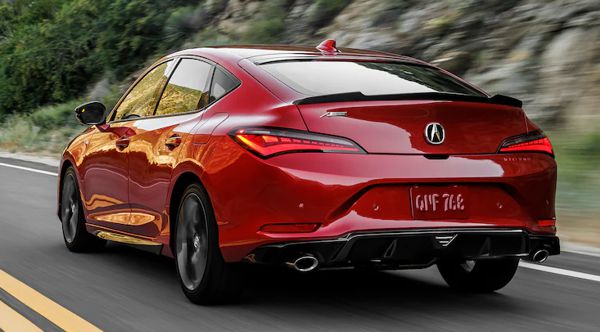
|
|
A
1.5-liter turbo motor producing 200hp has to be admired, but Toyota
managed to squeeze out 300 hp from the same capacity.
|
|
Powertrain is shared with the Civic Si, of course. A 1.5-liter
turbocharged motor (with VTEC on exhaust cam) producing 200 horsepower
has to be admired, but recently Toyota managed to squeeze out 300
horsepower from the same capacity and even with a cylinder down (see GR
Corolla). This shows the differences between a true sport motor and a
mass-producing motor tuned to be sporty. And I suppose the Integra name
deserves a true sport motor. As the Acura carries 55 kg more than the
equivalent Civic Si, it sprints from rest to 60 mph in around 7
seconds, again, not quick enough for something wearing the Integra
badge.
Saving the grace is the 6-speed manual gearbox with its fantastic
gearshift, which is short, slick and precise. Strangely, manual box is
bundled in the A-spec package which costs $5000 over the standard car
with CVT. That package adds also a helical limited slip differential,
so it is a must for keen drivers. Regarding the CVT, I don’t understand
why people buying an Integra would choose it. Honda’s CVT doesn’t drone
the engine as much as older CVTs, but this just say it is more
tolerable, not something positive.
As for ride and handling, the Acura shares the high standard of the
latest Civic. It steers sweetly and leaves a little bit scope for
lift-off oversteer. Body control is tight enough. The suspension soaks
up bumps well, even in the stiffest setting of adaptive dampers.
Unfortunately, the all-season tires lack grip, limiting its roadholding
and running into understeer early. This makes it less quick and less
fun to drive than the Civic Si which costs $8500 less to buy. While the
Acura’s adaptive suspension returns a smoother ride, its sound
insulation is insufficient, lacking the refinement you would expect in
a compact premium car.
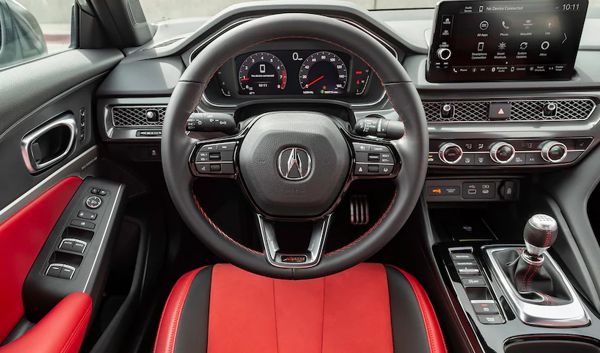
|
|
Civic-grade
interior lacks luxury and sound insulation to match German premium
compacts.
|
|
And then you will find the interior almost exactly the same as the
current Civic. Admittedly, the new Civic has improved its interior
styling and build quality massively from a generation ago, but there is
no confusing with a premium product like Mercedes CLA, BMW 2-Series
Gran Coupe or even a Mazda 3. The Integra adds upgraded seats and
special upholstery at a few places, otherwise it is just the same as a
Civic. Moreover, the fastback tailgate robs a little bit headroom,
limiting rear passengers to no more than 5ft 10in.
In short, buyers don’t care about looks and badge will be happier to
opt for a Civic Si, which is a tad faster, handles significantly better
due to its grippier tires, roomier inside and a lot cheaper. Those
demanding more performance and smell of luxury will be better served by
its German counterparts, albeit for a bit more money.
Acura said the first generation Integra introduced in 1985 also drawn
on the same formula, i.e. built on the underpinnings of Civic and
offered the same powertrains. However, if you remember, that Integra
was truly amazing in the way it differed from the Civic. It was
considerably larger, offered a fastback body that the Civic did not and
was styled like a sport car – remember that glassy tailgate, sweeping
bonnet and pop-up headlamps? It was by no means a reskinned Civic.
Honda really needs to rethink about its product strategy, producing
something that people want rather than playing tricks with concept and
names.
|
Verdict:   |
Published on 4
Jul 2023
|
All rights reserved.
|
|
Integra Type S
|
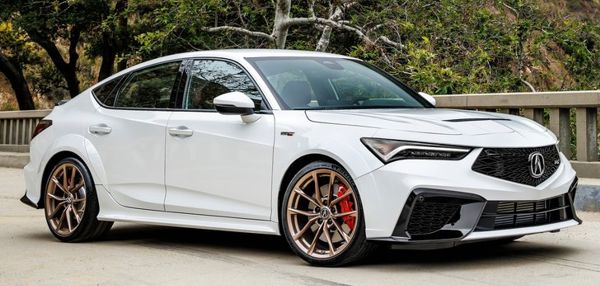
|
|
An
extra $7K turns Civic Type R into a premium performance car, at least
that's the plan of Acura.
|
|
The 1995 Integra Type R
was the peak of Honda’s affordable coupe. It was one of the
best-looking cars on the road, also one of the most thrilling to drive,
thanks to a 190hp 1.8-liter VTEC motor that spins to 8400 rpm, superb
gearchange and sharp handling. After that, the Integra started
declining as it relied more and more on the underpinnings of Civic.
Honda eventually killed it in 2006.
16 years later, American Honda resurrected the Integra nameplate by
reskinning the Civic and badging it as an Acura. Not far from General
Motor’s notorious badge-engineering tricks, it is a cheap way to
produce a premium car based on an existing mass production one. The new
Integra might have more equipment and a classier look – which is
subjective I must say – but the Civic is the smarter choice.
However, the case of Integra Type S could be a little bit different.
Although it is not a Type R – Acura always use Type S to denote its
slightly different market positioning – it is every bit a Civic Type R
underneath the different sheet metal. Yes, at $52,000 it is $7,000 more
expensive than the already expensive Civic Type R, but the Acura is
tuned to deliver a different character. Just as its tiny boot lid
spoiler implies, it is not optimized for track performance. That’s why
its suspension’s adaptive dampers are tuned slightly softer, its
steering is a tad lighter and it has more sound insulation at the
firewall and floor. All combined to make the Integra Type S friendlier
for daily driving – in particular, it rides better on broken surfaces,
and the cabin is less immersed in all sorts of noises. A premium car it
might not be, the Integra Type S is definitely easier to live with than
the hardcore Civic Type R.
Honda said its K20C1 motor produces 320 horsepower, 5 ponies more than
the American market CTR. However, that is due to different fuel quoted
– 93 Octane for Acura and 91 RON for Honda. Drive the cars back to
back, however, you might notice the throttle mapping a bit different:
at half-opened throttle, the Integra’s power delivery is slightly
smoother, with less rush of torque in the mid-range. On full throttle
though, the triple-exhaust still produces great noises.
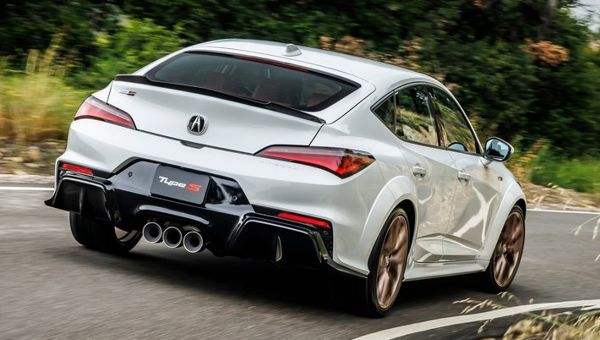
|
|
The
Acura offers 90 percent thrills of CTR while is easier to live with.
|
|
Officially, the Acura gains only an extra 14 kg from its cousin, so if
there is any loss of performance, it will be hard to notice on the
road. It is still a very quick car, capable to sprint from rest to 60
mph in just over 5 seconds and tops around 167 mph. It also carries
over the CTR’s very best 6-speed manual gearbox, which might sound at
odds to a “premium” car but is really rewarding to keen drivers.
The Type S keeps most of the Type R’s handling capability. Its
roadholding is remarkable, thanks to very wide rubbers and dual-axis
front suspension. The steering is precise and faithful, and the car
steers into corner sharply. The braking is reassuring. On a track, it
doesn’t corner quite as swiftly as the Type R owing to the lack of
downforce and stiff damping, but on the road the differences are very
subtle. Its performance and chassis dynamics are definitely closer to
Type R than anything else on the market, which means outstanding.
Inside, its sports seats don’t hug you as tightly as the red Recaro
buckets on CTR, and it is mounted a tad higher than ideal, but in
return you get 12-way power adjustment and heating. Despite the price
elevation, the Acura’s interior doesn’t look a lot more expensive than
the Civic, which is a shame. Its fastback roofline robs rear headroom
while a high boot lip makes loading luggage difficult. It also lacks a
rear screen wiper. It is neither as practical nor as premium-feeling as
cars like Audi S3, Mercedes-AMG A35 or VW Golf R, but the Integra’s
strong dynamics and manual gearbox place it in a unique market
position.
The only problem is that high price. $52K can buy you the
aforementioned premium hot hatches, all completed with 4WD and
dual-clutch gearbox. If you don't need those rear seats often, a
six-cylinder BMW M240i is another tempting choice. Finally, if all you
chase is ultimate driving thrills, nothing could be better than
sticking with Civic Type R and save 7 grands.
|
Verdict:     |
|